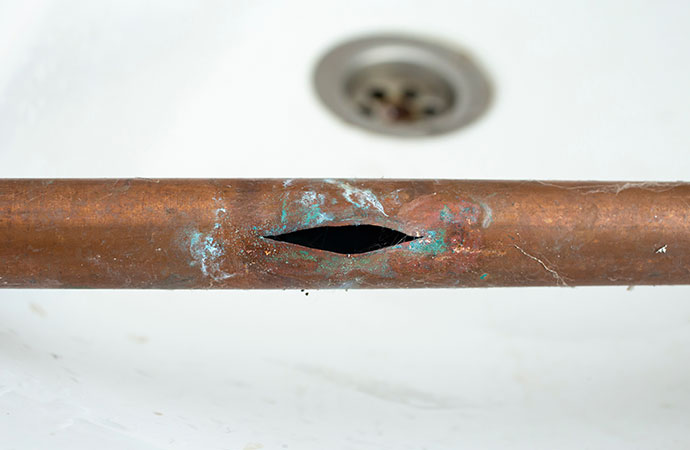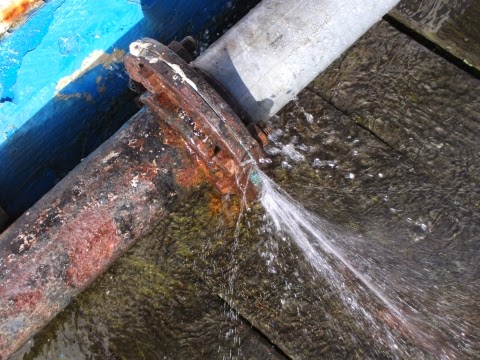Finding and Efficiently Fixing a Leaking Pipe: What You Need
Finding and Efficiently Fixing a Leaking Pipe: What You Need
Blog Article
Here below you can find a bunch of wonderful ideas when it comes to How to Prepare for Your Dishwasher Installation.

A burst pipe is a significant emergency; you can only stand as you enjoy water you pay dearly to rejoin with the earth. In even worse situations, you see a pool on your cooking area flooring, which is an excellent trip hazard, specifically if you have youngsters around. If the pipeline that ruptured remained in your walls, bad news: you may require to paint that entire section.
How can a disaster like a ruptured pipeline be protected against and handled? Well, by listening to your expert emergency plumbing professionals and complying with these regulations.
Exactly how do I understand when my pipes have burst?
Changing water pressures
Pipes do not simply burst in a day. You might have observed that your cooking area tap or shower doesn't run immediately when you transform the tap. It might stop briefly for a couple of seconds and after that blast you with even more pressure than common.
In various other instances, the water might appear normal initially, after that decrease in pressure after a few secs.
Wet walls and water spots
Before a pipe ruptureds, it will leakage, a lot of times. If this persistent dripping goes undetected, the leak might graduate into a wide gash in your pipe. One very easy method to avoid this emergency is to look out for wet wall surfaces ad water spots. These water stains will certainly lead you right to the leak.
Puddles under pipelines as well as sinks
When a pipe ruptureds, the outflow develops a pool. It may show up that the pool is growing in dimension, and also despite the amount of times you mop the pool, in a few mins, there's one more one waiting to be cleaned. Usually, you may not be able to trace the puddle to any type of visible pipes. This is an indication to call a professional plumber.
Untraceable leaking sounds
Pipe bursts can happen in one of the most undesirable locations, like within concrete, inside walls, or under sinks. When your home goes quiet, you might be able to hear an irritatingly relentless trickling noise. Even after you have actually checked your shower head as well as kitchen tap, the dripping might continue.
Precious reader, the dripping may be originating from a pipeline inside your wall surfaces. There isn't much you can do regarding that, except tell an expert plumber.
Shut off the Water
When water ices up, it broadens in quantity by regarding 9 percent. And it increases with incredible force: The pressure inside pipelines might go from 40 pounds per square inch to 40,000 psi! No pipe can hold that much stress, so it bursts. The break might happen where the ice forms, yet regularly, it occurs where water pressure discovers a weak point in the pipe. That may be inches and even feet from the icy location. Locate the water shutoff valve and turn off the water to avoid more damage. You might also need to turn off the electrical energy too, depending upon where the leaks occurs as well as just how big it is.
Polluted water
Lots of people assume a ruptured pipe is a one-way electrical outlet. Rather the contrary. As water drains of the hole or wound in your plumbing system, impurities discover their way in.
Your water may be contaminated from the resource, so if you can, examine if your water tank has any problems. Nonetheless, if your drinking water is provided as well as purified by the city government, you should call your plumber promptly if you see or scent anything funny in your water.
What do I do when I identify a ruptured pipe?
Your water meter will remain to run also while your water wastes. To reduce your losses, discover the primary controls and turn the supply off. The water mains are an above-ground structure beside your building.
How to Fix & Detect a Leaking Pipe
How Do I Know if a Pipe is Leaking?
Leak detection tests can help you determine if your pipe has a leak. Even if you don’t see an apparent leak, you should still conduct leak detection tests regularly to save water and money—and prevent major damage to your home.
Water meter. It can be helpful to figure out what your usual water meter usage numbers are and then monitor them regularly. To monitor your meter, first, turn off all water faucets in your home. Check the meter and write down the numbers. In a few hours, check the meter again. If the numbers have changed, you have a leak. Water gauge. Use a water gauge to test your water pressure. Your showerhead should produce a certain amount of water pressure based on its model and design. If the pressure is lower than it is supposed to be for that specific showerhead, your home likely has a leak. Puddles. Look inside your bathroom, laundry, and kitchen sink cabinets. Puddles around the cabinets or around toilets, tubs, showers, and washing machines indicate the presence of a leaking pipe. You may also notice loose tiles, peeling or flaking paint, or mold caused by water accumulation. Napkin test. Even if you don’t see any puddles, you may still have a leak. You can test for water leaks in the bathroom, laundry, and kitchen by wiping below-sink connections with a napkin, paper towel, or piece of toilet paper. If it becomes damp, you probably have a leaking pipe under the sink. Discolored walls. Walls that are discolored—usually with brown or yellow stains—or bulging might mean that they have been impacted by water damage caused by a leaking pipe. Smell. A leaky pipe will create sitting water, and over time, that water may develop a musty smell. If your home smells musty, but you can’t locate the source, it may be due to a leak. Steps for Fixing a Leaking Pipe
A leaky drain can be remedied by tightening the pipe base, replacing the drain seal, caulking the rim, and tightening the pipe nut. Similarly, a leaking toilet pipe can be treated by tightening the packing nut. You may also need to replace the valve. A leaky faucet may just need tightening or replacement of the washers. If that doesn’t work, consider replacing your faucet. If your pipe has a hole in it, you may want to use a pipe leak sealer or pipe leak tape. This quick fix for water pipe leaks can also temporarily fix a copper pipe leak. https://www.ahs.com/home-matters/quick-tips/how-to-tell-if-pipes-are-leaking/

I ran across that article about How to Prepare for Your Dishwasher Installation while doing a lookup on the web. In case you appreciated our blog posting please do not forget to share it. We recognize the value of reading our article about How to Install and Connect a New Dishwasher.
Ensure leak-free homes. Report this page